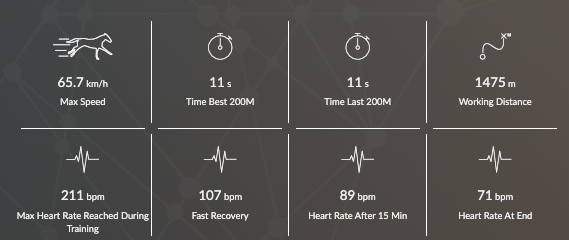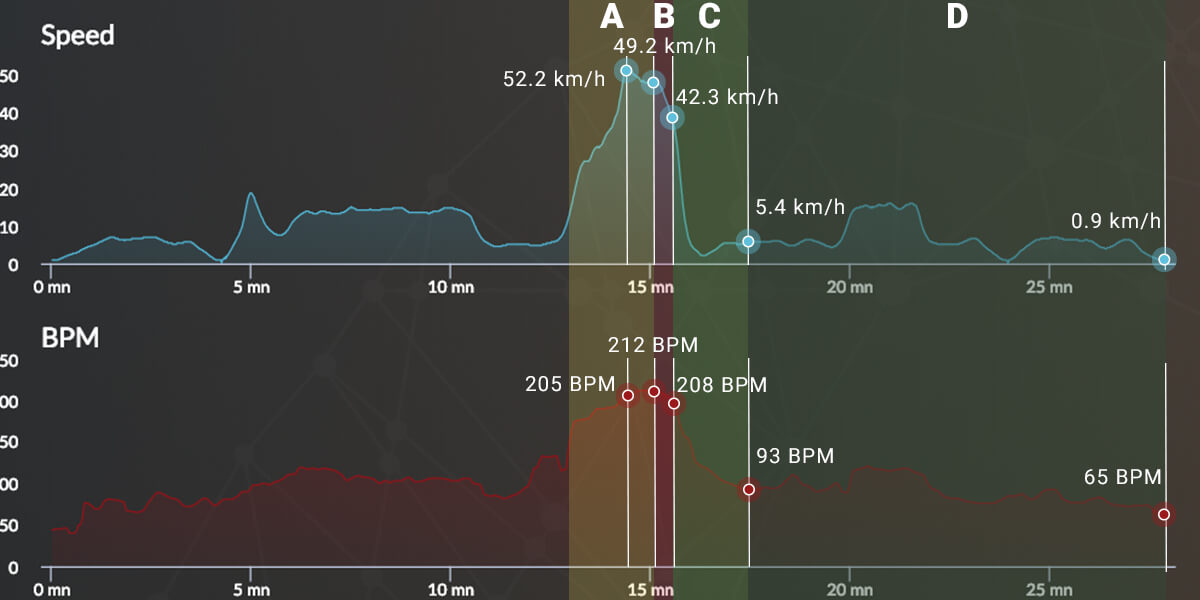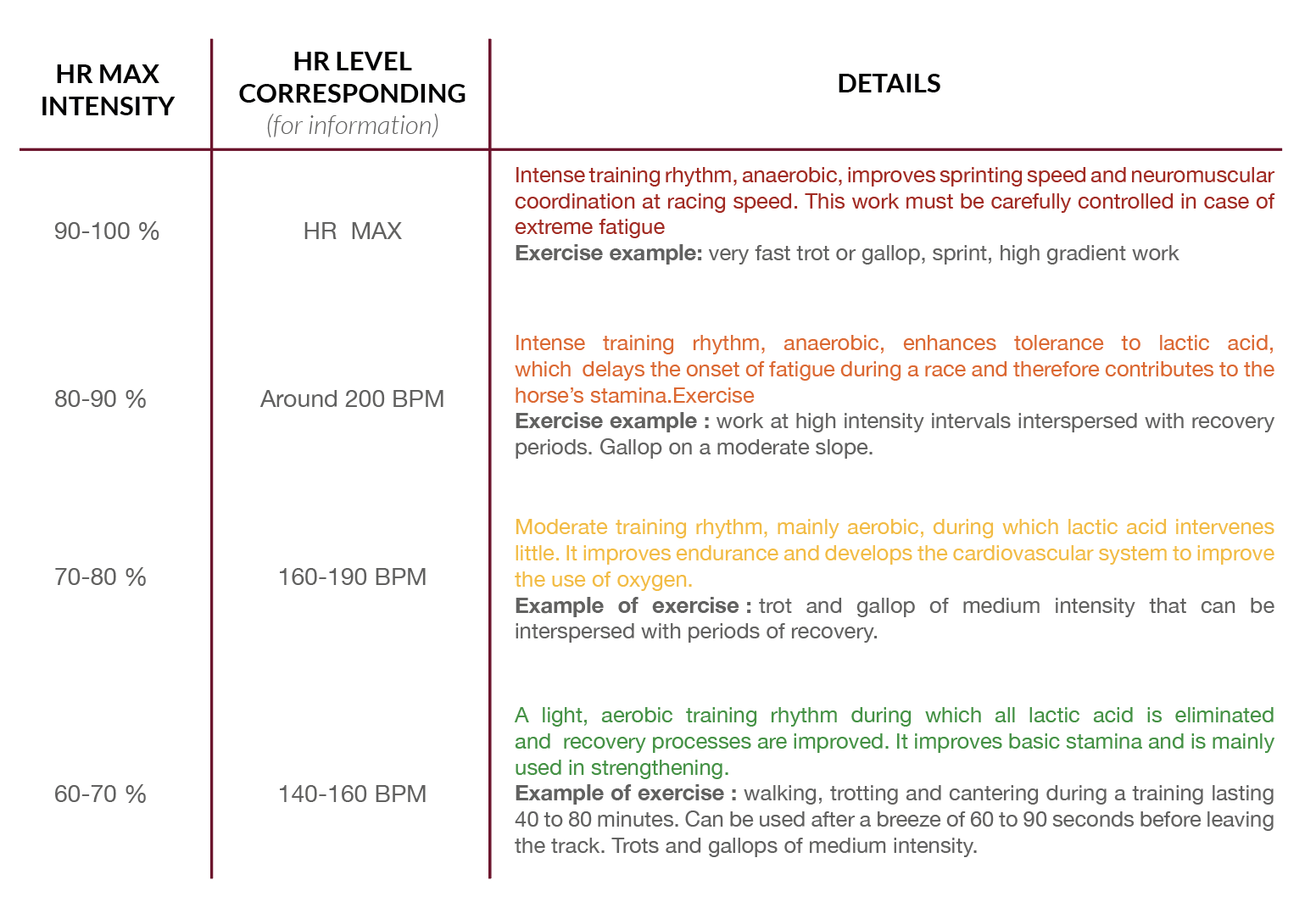The Heart Rate Trend Chart shows how the horse worked, assesses the intensity of the exercise in relation to the speed of work, and the level of recovery of the horse. These parameters quantify objectively the horse’s level of fitness, ability to exercise and fatigue.
A precise knowledge of the heart rate of your horse during training or racing makes it possible to optimize its performance and to be alerted to possible subclinical pathologies. It also allows you to better adapt the exercises to improve your racehorses’ cardio and physical performance.
Which data should you monitor?
The two important types of data we have to start looking at when analysing a training are the cardio and speed data. The speed data are a tool to assess the effort intenity, especially when we can compare them to the cardio data.
Here are the key parameter data of a hard gallop during a training in Deauville.
It provides a first insgiht about the horse’s work.
Then, we have to look at the speed and heart rate curves, and they should follow the same trend.
Four heart rates zones to analyse
The work zone
The speed and heart rate rise during this zone, and it helps to quantify the level of HRmax reached during exercise.
One can assess the difficulty of work by observing at what percentage of the HR Max the horse has worked. We can define 4 main areas of work corresponding to different intensities, to train a horse in a particular zone will have a different physiological effect.
For example, if the lactic threshold is about 80% of the HR Max, working below this threshold improves the horse’s aerobic capacity and optimizes the horse’s «fitness» and endurance. In contrast, working at more than 80% requires more lactate production, which increases fatigue but stimulates metabolic adaptation and coordination in high-intensity exercises: this improves sprint power, energy and acceleration.
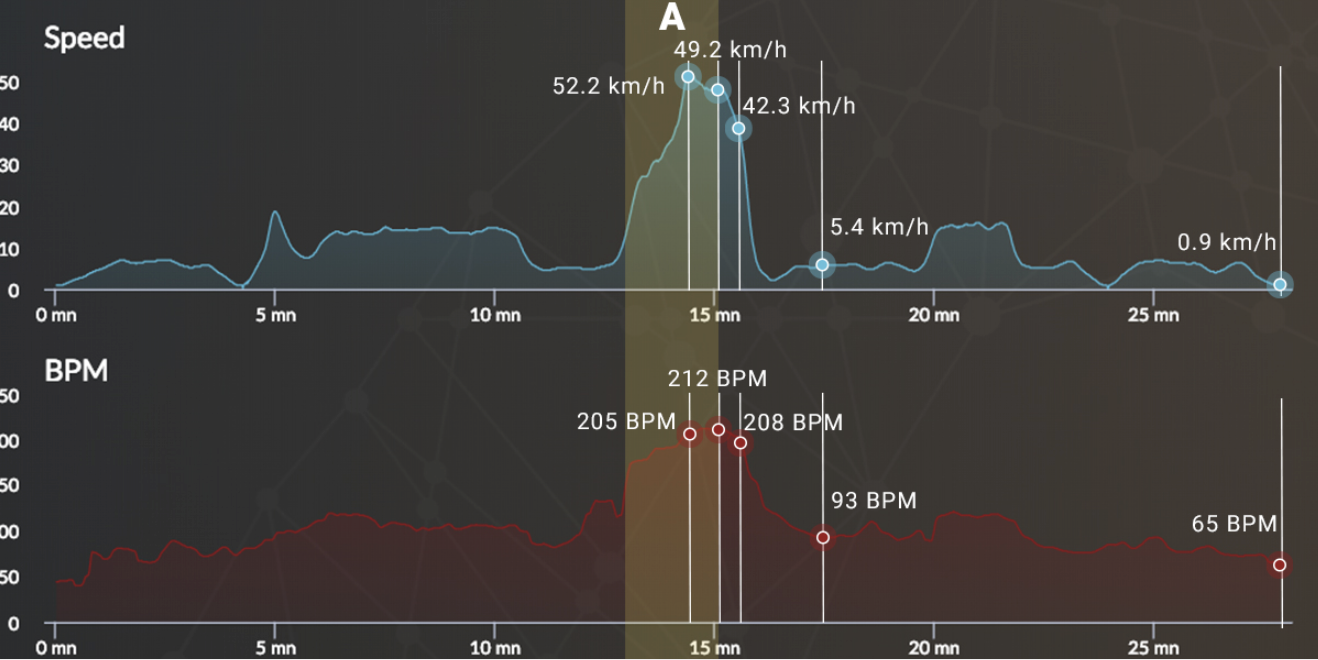
Horse 1
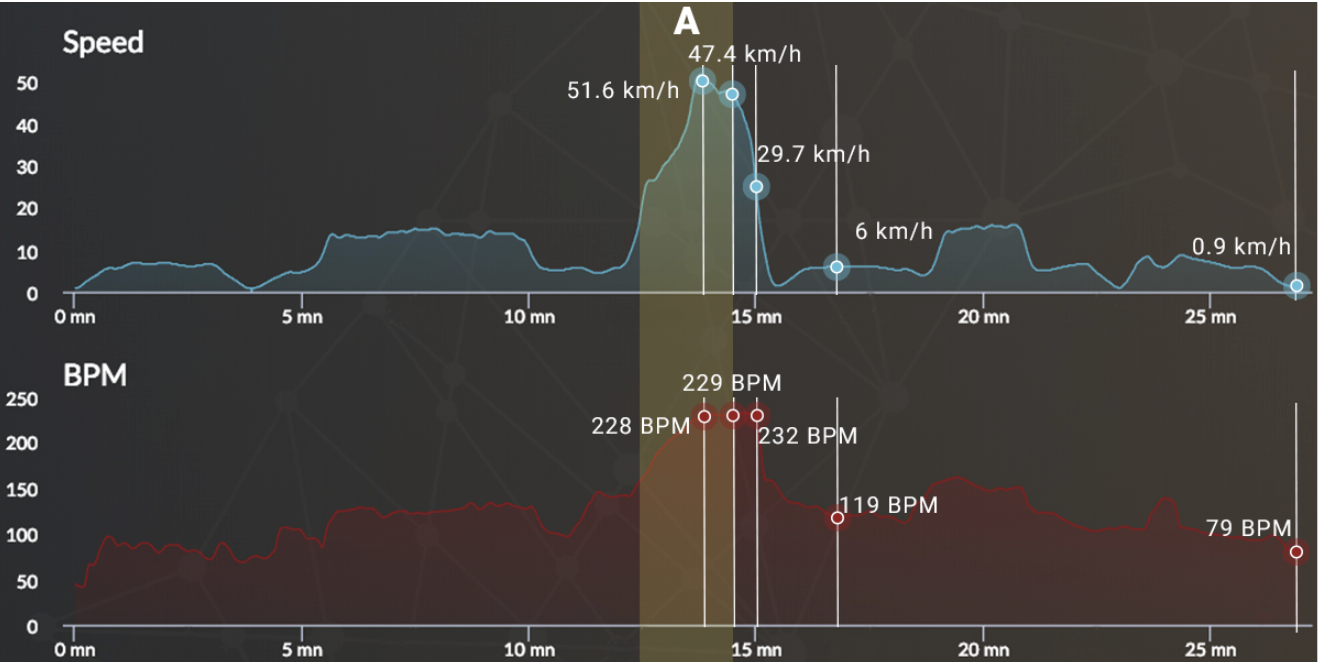
Horse 2
Both horses performed the same exercise. Horse 1 reaches a peak heart rate of 212 BPM, which is 89% of his maximum heart rate (measured at 238 BPM). It is therefore a rather intense exercise especially as the effort is maintained over 1000 m. Horse 2 reaches his maximum heart rate of 233 BPM which corresponds to 100% of his maximum heart rate. The exercise was therefore very intense for the horse, it probably would not be able to maintain a racing speed.
Unlike Horse 1, Horse 2 is not ready to race yet.
The deceleration zone at the end of training
At the end of exercise, the speed decreases significantly, the heart rate must follow this decrease. However, it can remain high in order to compensate for the oxygen debt accumulated during effort. The duration of this zone witnesses the exercise intensity, and the horse’s ability to cope with it.
The shorter the area, the more tolerant the horse is and the better it has performed.
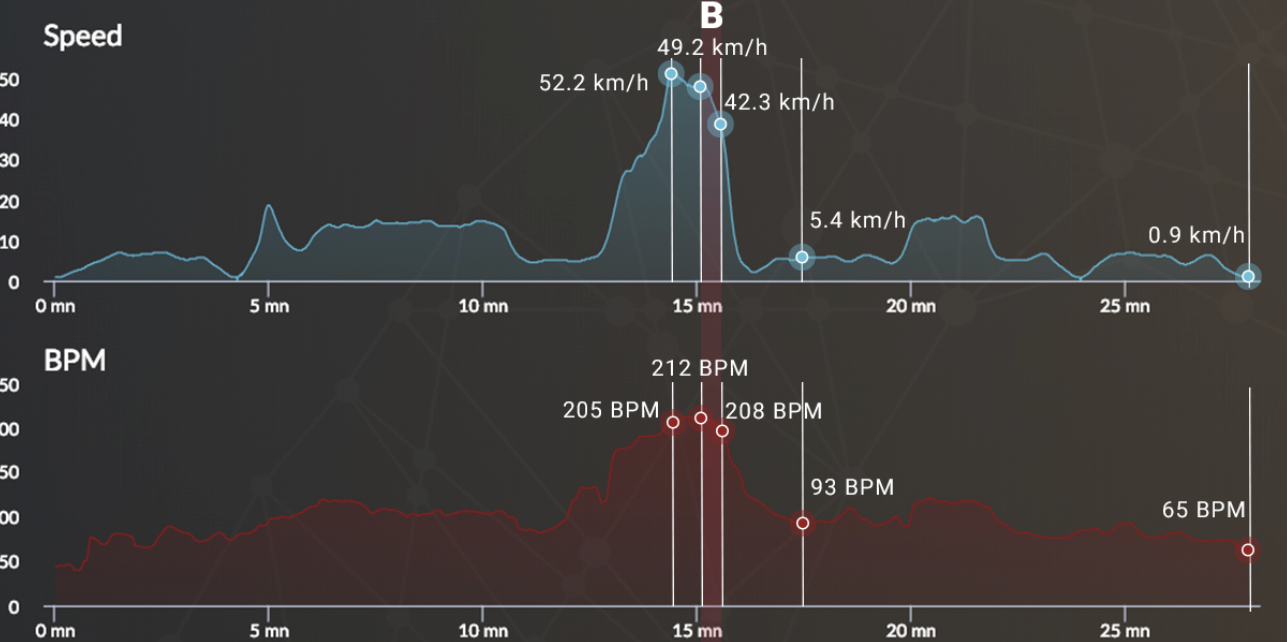
Horse 1
The heart rate of Horse 1 decreases rapidly at the end of the exercise, the horse coped the exercise well.
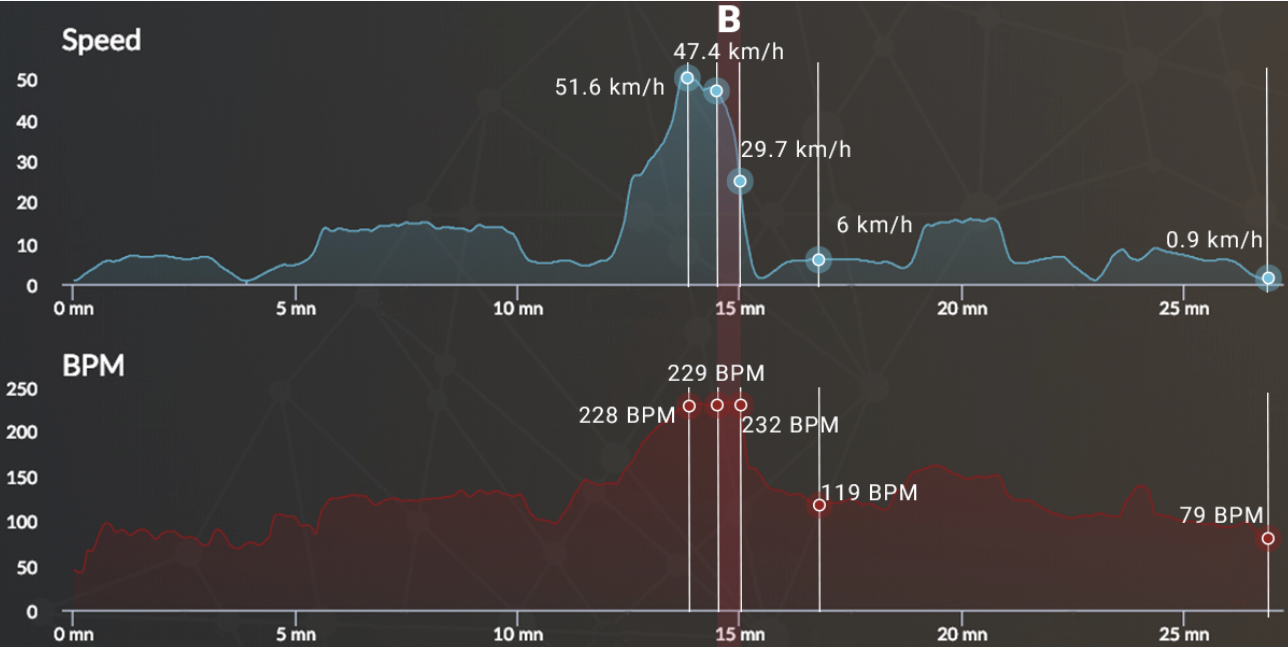
Horse 2
The heart rate of Horse 2 continues to increase slightly at the end of the exercise, showing this exercice was difficult.
The rapid decrease in heart rate – Rapid recovery
At the end of work, after a period of heart rate maintenance (zone B) at a high level, the heart rate decreases very rapidly over a few tens of seconds (zone C). This zone is characteristic of the recovery of the parasympathetic nervous system, responsible for the slowing of the heart rate, the sympathetic nervous system, responsible for the control of a large number of autonomous activities of the horse, and the increase of the heart rate during stress or excercice.
The faster the horse’s heart rate decreases after exercise, the better the physical condition.
It is important to evaluate the level of return relative to the horse’s HR Max. Let’s take the example of two horses performing the same exercise: the first horse goes up to 235 BPM (90% HR Max) and the second to 217 BPM (90% HR Max). After 90 seconds, they both reach 120 BPM. The horse being monitored at 235 BPM has recovered better. The higher the intensity of exercise, the higher the level of recovery.
On average, horses’ heart rates range between 55% and 50% of their HRmax for rapid recovery.
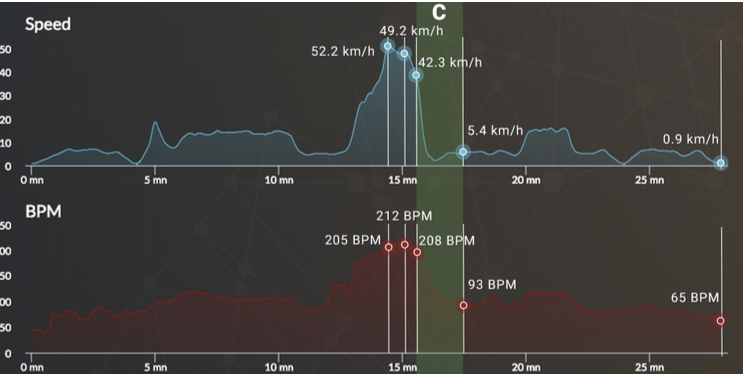
Horse 1
Despite an absence of Zone B, rapid decline is short (1min52s) to go down to 93 BPM or 39% of his maximum heart rate, which shows a good quick recovery.
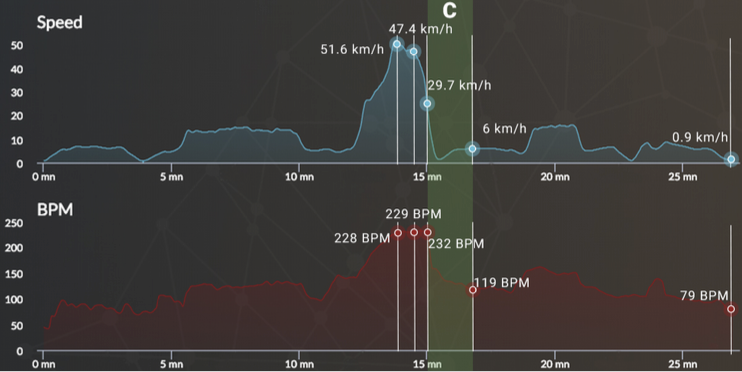
Horse 2
The recovery slope is rather fast. Despite a large Zone B, the rapid decrease is short (1min55s) to go down to 131 BPM or 56% of its maximum heart rate, which remains important. The horse is struggling to recover from the exercise.
The slow decrease in heart rate – 15 minutes recovery
The better the horse is, the faster it returns to its initial heart rate. It has been shown that the recovery time (D) is correlated with the level of performance of the horse: the lower it is, the better the horse. The type of recovery (active or passive), can have a great influence on the heart rate back to the yard. The closer it is to the base frequency, the more the horse will have recovered from the work session he has done. A significant increase in the recovery time is evidence of difficulty in recovering. It can originate from fatigue, a pathology, or a cardiopulmonary disorder.
The recovery time (D) is correlated with the horse’s fitness level.
On average, horses’ heart rates range between 50% and 45% of their HRmax for 15 minutes recovery.
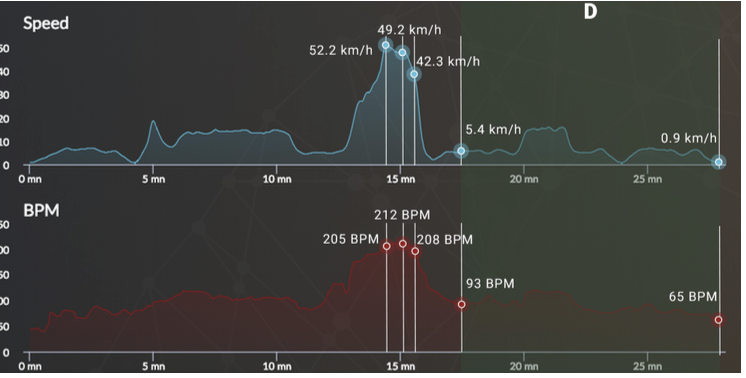
Horse 1
During slow recovery, Horse 1 drops from 93 BPM to 65 BPM when returning to the yard. The horse has recovered very well and is in good condition ready to tackle more difficult exercises. It should be noted that the Trainer has chosen to perform an active recovery to promote the elimination of lactates following anaerobic training.

Horse 2
During the slow recovery, Horse 2 goes down from 119 BPM to reach 80 BPM when returning to the yard. It can be seen that active recovery had a very positive effect on recovery, the horse recovered as a result of slow recovery. The heart rate back at the yard is still high, the horse is probably not ready to run yet. It should also be noted that the Trainer has chosen to perform an active recovery to promote the elimination of lactates following anaerobic training.
You can also watch the analysis of the horse heart rate frequency during training in video here.
Key words: racehorse fitness, fitness monitoring, aerobic process, racehorse heart rate analysis


